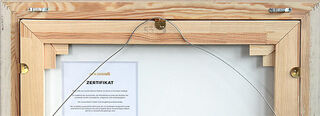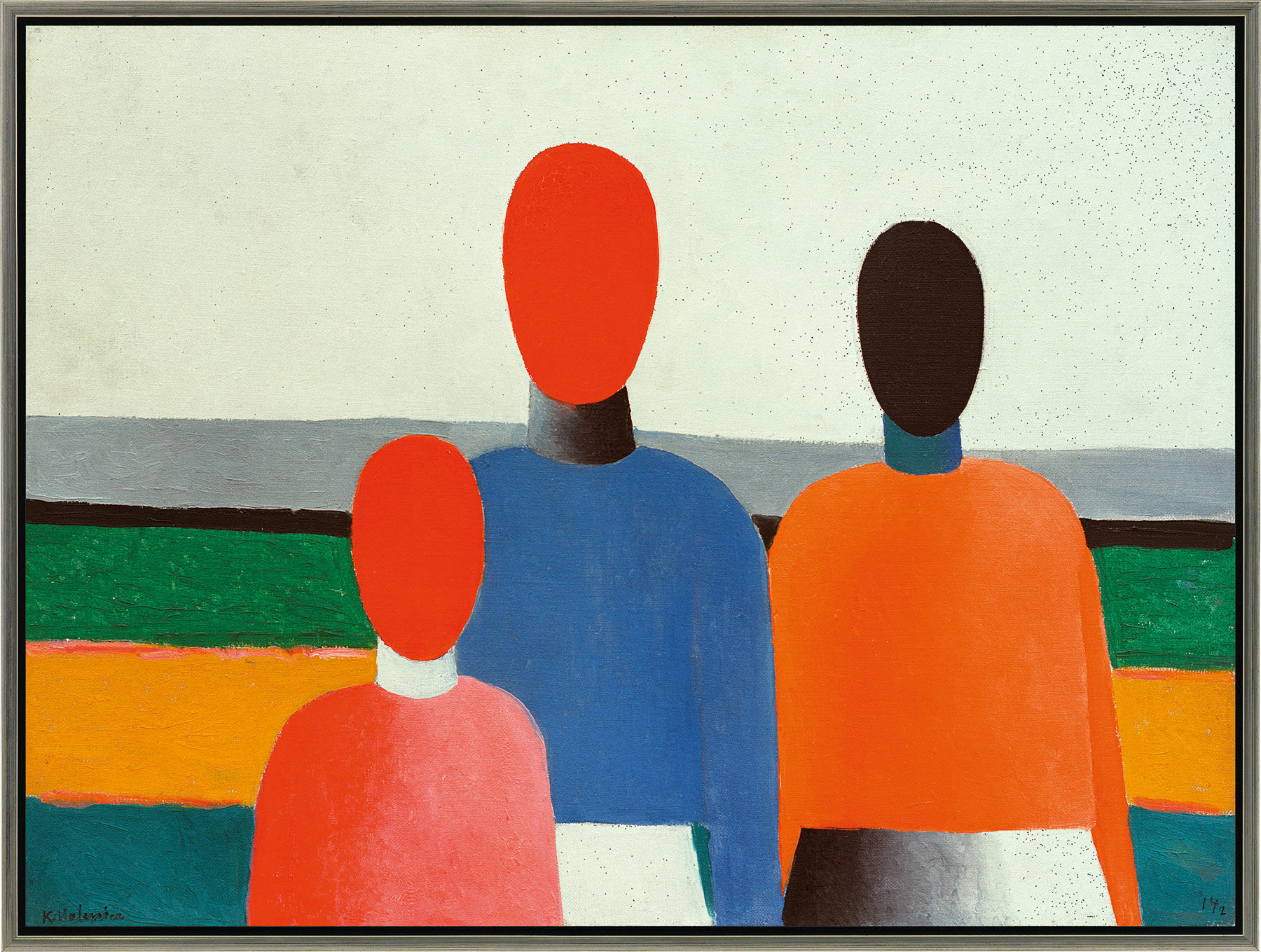Picture "Three Female Figures" (1928/32), framed


Picture "Three Female Figures" (1928/32), framed
Quick info
ars mundi Exclusive Edition | limited, 499 copies | numbered certificate | reproduction, Giclée print on canvas | on stretcher frame | framed | size 74 x 98 cm (h/w)
Detailed description
Picture "Three Female Figures" (1928/32), framed
Colourful abstraction meets the human figure. Kasimir Malevich (1878-1935), Russian painter and founder of Suprematism, returned to a more figurative style in his late work.
Original: 1928/32, oil on canvas, 47 x 63.5 cm, State Russian Museum, St. Petersburg.
Reproduction using the Fine Art Giclée process directly on artist's canvas and mounted on a stretcher frame. Limited edition of 499 copies, numbered certificate on the back. Framed in solid wood shadow gap frame. Size 74 x 98 cm (h/w). ars mundi Exclusive Edition.
Frame configurator
Customised picture frame

Frame configurator
Customised picture frame






About Kasimir Malewitsch
1878-1935
His work "Black Square" of 1915 is one of the most famous works in modern art history. As the main representative of the Russian avant-garde, Kazimir Severinovich Malevich was for a long time at the centre of the most diverse trends of early modernism.
After impressionistic attempts, he came to grips with Cubism, Constructivism and Futurism before finally developing his own style, called Suprematism. According to Malevich's conviction, art in Suprematist non-objectivity could only have itself as its content.
In his late work, Malevich returned to figurative painting. In doing so, however, he eluded the political claims of "Socialist Realism" so thoroughly that it only found greater publicity after the end of the Soviet Union.
Graphic or sculpture edition that was initiated by ars mundi and is available only at ars mundi or at distribution partners licensed by ars mundi.
Giclée = derived from the French verb gicler "to squirt, spurt".
The giclée method is a digital printing process. It is a high-resolution, large-format printout on an inkjet printer with special different-coloured dye- or pigment-based inks (usually six to twelve). The colours are fade-proof, i.e. resistant to harmful UV light. They have a high richness of nuance, contrast and saturation.
The giclée process is suitable for art canvases, handmade and watercolour paper as well as for silk.






